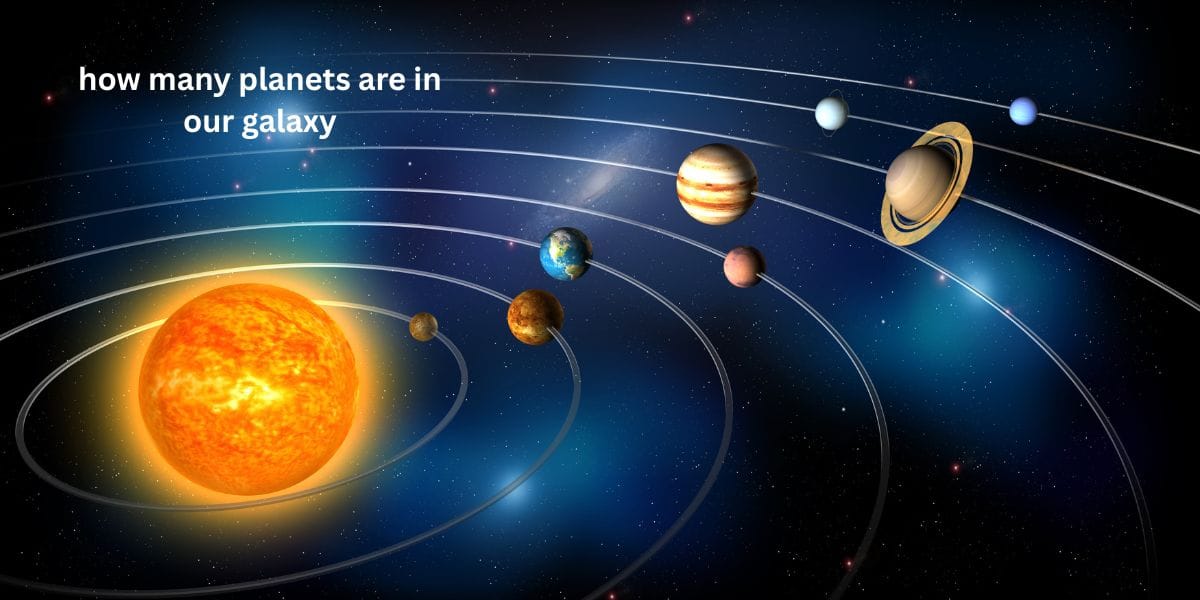Our galaxy, the Milky Way, is a huge collection of stars, dust, and planets. It’s so big that even light takes thousands of years to cross it!
Scientists have discovered thousands of planets orbiting other stars. But how many are there in total? The number might surprise you. Could there be more planets than stars in our galaxy?
What Is the Milky Way Galaxy?
The Milky Way is our home galaxy. It is a giant spiral of stars, gas, and dust. Our solar system is just a tiny part of it.
- The Milky Way has about 100 billion stars.
- It is about 100,000 light-years across.
- Our sun is just one of many stars in this galaxy.
If you imagine the Milky Way as a big city, our solar system would be like a small house in one neighborhood.
How Many Planets Are in the Milky Way?
Scientists estimate there are more planets than stars in our galaxy. That means there could be over 100 billion planets!
- Most stars have at least one planet orbiting them.
- Some stars have many planets, like our sun with eight.
- New planets are discovered every year.
This means there are likely trillions of planets in the entire universe!
How Do Scientists Find Planets in Our Galaxy?
Planets outside our solar system are called exoplanets. Since they are far away and don’t shine like stars, scientists use special methods to find them.
- Transit Method: They watch for tiny dips in a star’s light when a planet passes in front.
- Gravity Method: They measure how a star wobbles because of a planet’s pull.
- Direct Imaging: Powerful telescopes take pictures of planets near bright stars.
Thanks to these methods, we now know of over 5,000 confirmed exoplanets!
What Kinds of Planets Exist in the Milky Way?
Planets come in many types. Some are rocky like Earth, while others are gas giants like Jupiter.
- Rocky Planets: Small, solid planets like Earth and Mars.
- Gas Giants: Huge planets made mostly of gas, like Jupiter and Saturn.
- Ice Giants: Cold planets like Uranus and Neptune.
- Super-Earths: Bigger than Earth but smaller than Neptune.
Scientists have even found planets made of diamond, lava worlds, and planets with two suns!
Are There Planets Like Earth in Our Galaxy?
Yes! Scientists have found many Earth-like planets in the “habitable zone.” This is the area around a star where water could stay liquid.
- Some of these planets could have the right conditions for life.
- The closest Earth-like planet is Proxima Centauri b, just 4 light-years away.
- Future telescopes will study their atmospheres for signs of life.
Could one of these planets be home to aliens? We might find out soon!
Which Galaxy Has the Most Planets?
The Milky Way likely has more planets than most galaxies because it is very big. But some galaxies, like Andromeda, may have even more.
- Andromeda is bigger than the Milky Way.
- It has about a trillion stars, meaning even more planets.
- Galaxies with lots of stars usually have more planets.
Still, no one knows the exact number because galaxies are too big to count every planet.
Will We Ever Visit Planets in Other Solar Systems?
Right now, it is impossible because they are too far away. The fastest spacecraft would take thousands of years to reach the nearest star.
- Future technology, like light-speed travel, might make it possible.
- Scientists are working on new ways to explore space faster.
- For now, we study these planets using telescopes.
Maybe one day, humans will travel to another planet outside our solar system!
Conclusion
Our galaxy is full of planets—possibly over 100 billion! From rocky worlds to gas giants, space is more exciting than we ever imagined. Every year, scientists discover more planets, some of which might even support life.
📌 Frequently Asked Questions
How many planets are in our solar system?
There are eight planets in our solar system: Mercury, Venus, Earth, Mars, Jupiter, Saturn, Uranus, and Neptune.
What is the most common type of planet in the Milky Way?
Small, rocky planets like Earth are the most common. Scientists think there could be billions of them.
Can planets exist without a star?
Yes! Some planets float freely in space without orbiting any star. These are called rogue planets
What is the biggest planet in our galaxy?
The biggest known planet is ROXs 42Bb, a gas giant about 2.5 times larger than Jupiter.
How many Earth-like planets are in the Milky Way?
Scientists estimate there could be over 10 billion Earth-sized planets in the habitable zone.
Do all stars have planets?
Not all, but most stars have at least one planet. Some have many, like our solar system.
What is the closest exoplanet to Earth?
Proxima Centauri b is the closest, about 4.2 light-years away. It orbits the nearest star to our sun.
Can we see planets in other galaxies?
It’s very hard, but scientists have detected possible planets in galaxies beyond the Milky Way.
Are there planets made of diamond?
Yes! Some planets, like 55 Cancri e, are believed to have a lot of carbon, which could form diamonds.
Will we ever find aliens on another planet?
Scientists are searching for signs of life. With better telescopes, we might find clues in the next few decades!
